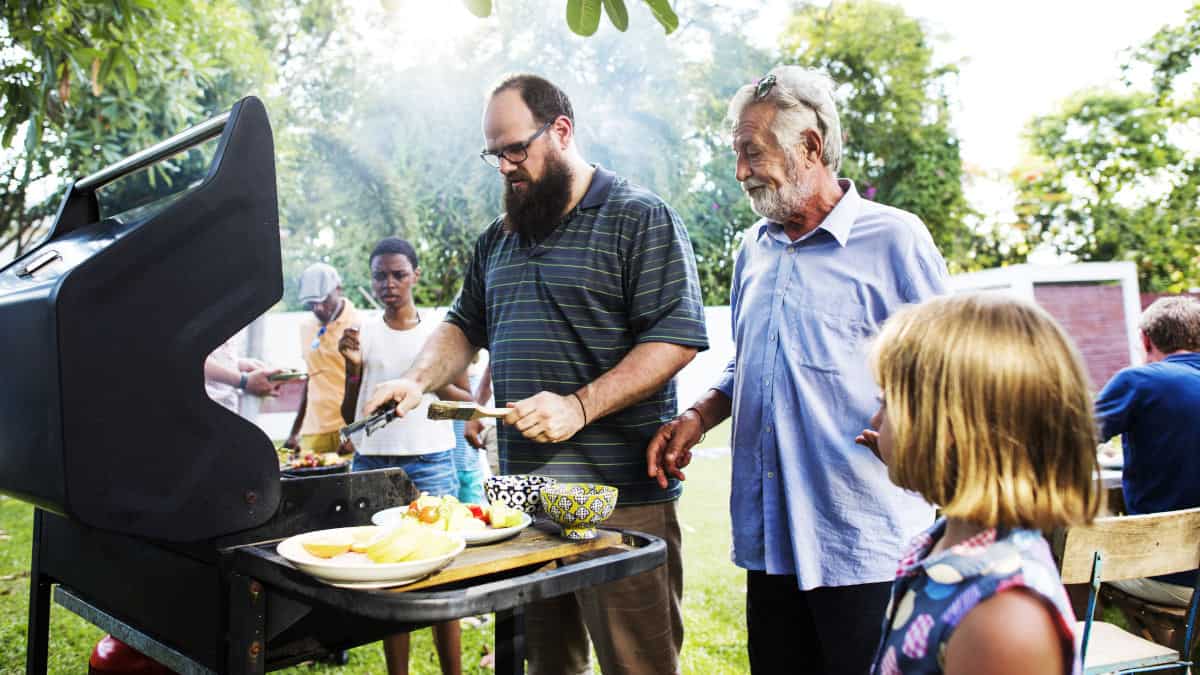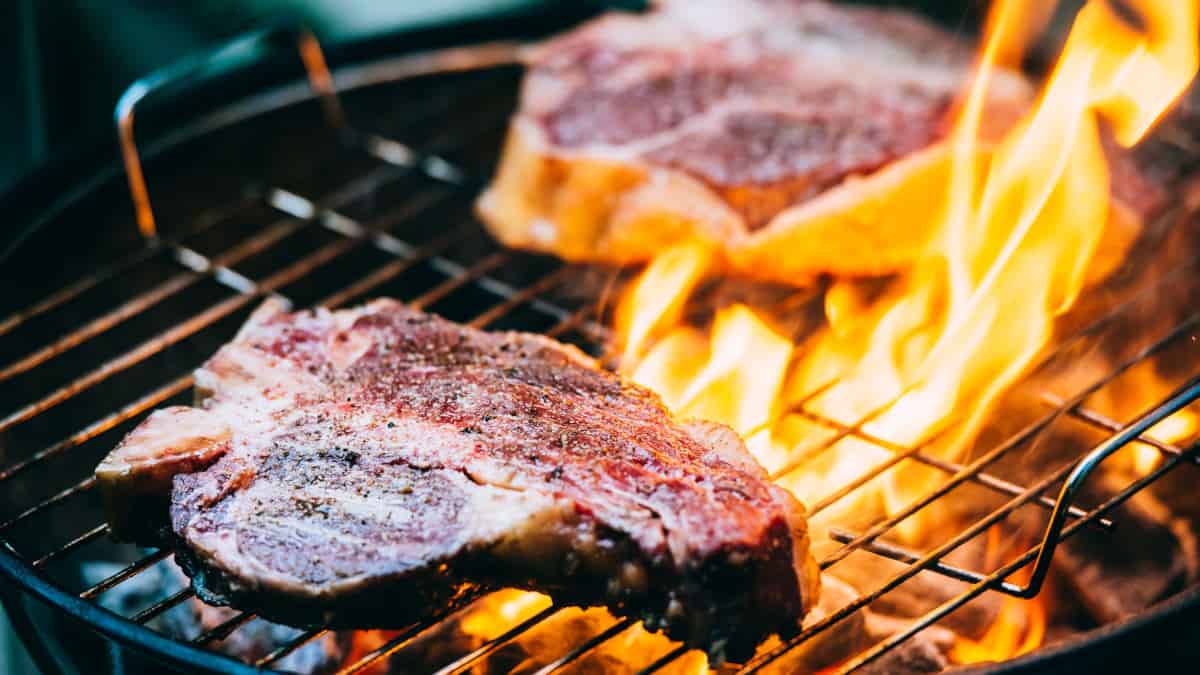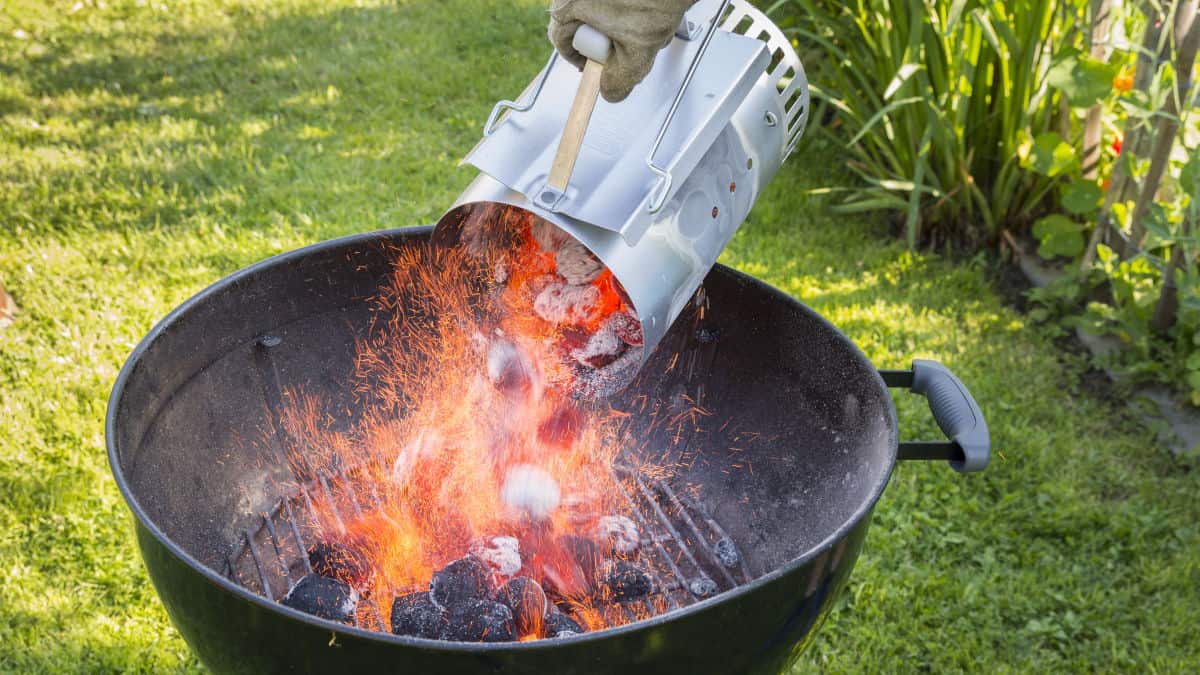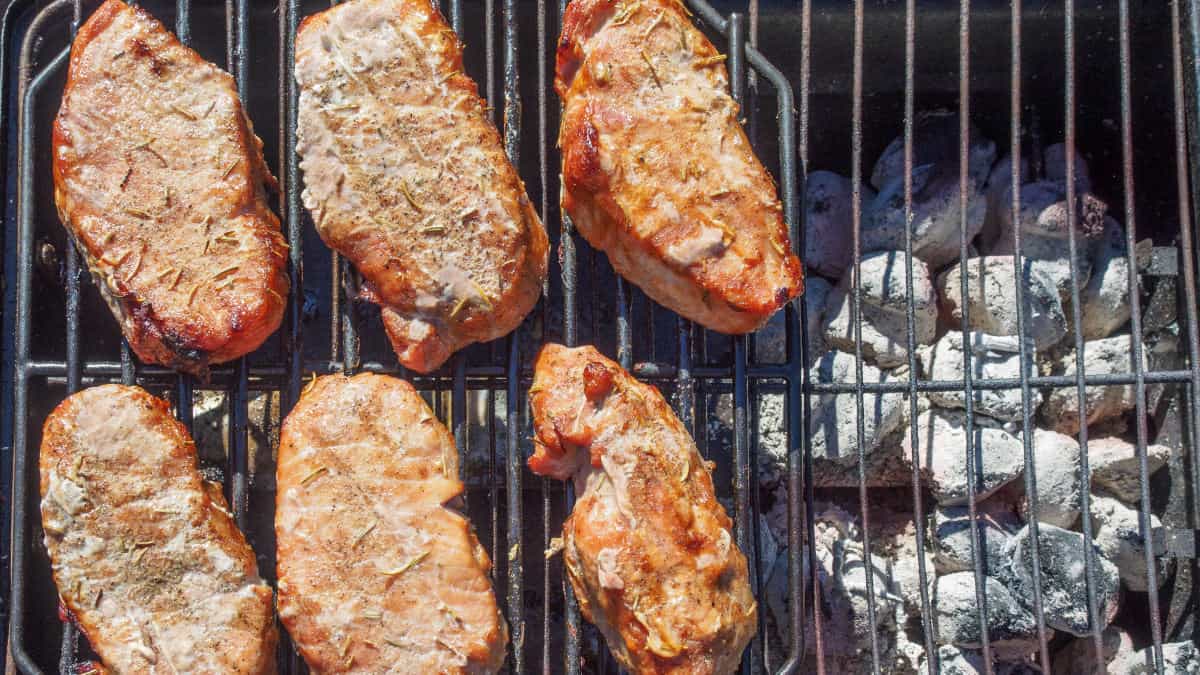Barbecuing and grilling are activities that people across the world enjoy when the summer season rolls around. There’s nothing more fun or relaxing that firing up the grill and throwing on some burgers.
Unfortunately, many people fail to remember that this summer past time can be incredibly dangerous.
According to the National Fire Protection Agency, 8,900 home fires between 2009 and 2013 occurred because of grills, barbecues, or hibachis.
In this guide, we give you all the barbecue and grilling safety tips you need for a safe experience.
Setting Up Your Grill
Preparation should happen long before you light up. There are a number of grilling safety precautions that can be taken during the assembly and setup of your grill to avoid potentially dangerous accidents in the future.
Read the Instructions
Grills come with an instructional manual for a reason. These manuals include a variety of useful safety guidelines and give you a better understanding of how the equipment works.
Not reading this manual automatically puts you at fault should the worst-case scenario happen.
While you may think that all grills operate the same way, they each have unique specifications that you need to understand.
If the grill requires assembly, you need to read the instructions thoroughly to ensure that the grill doesn’t fall apart mid-use.
Proper Grill Placement
Grills need to be at a considerable distance from the home and anything remotely flammable.
One of the biggest mistakes that homeowners can make is placing the grill next to the home on a wooden deck. The included manual of the grill will provide you with a recommended distance the grill should be away from buildings.
However, a good general rule of thumb is to keep it at least 10 feet away. It shouldn’t be placed under eaves or low branches. Wooden railings or fencing material should be cleared as well.
Proper Ventilation
Placing your grill in an open space away from walls can also help to ensure that there’s proper ventilation.
Smoke, while unavoidable and pretty enticing during a grill out, can be very problematic for your health. It contains Polycyclic Aromatic Hydrocarbons, or PCA. This is a cancer-causing substance that’s found in smoke.
Smoke also contains harmful carbon monoxide. Make sure to position your grill in a way that doesn’t blow smoke directly towards party guests or accumulate in one spot. Use the wind to your advantage so that it dissipates safely.
Keep the Grill Stable
Whether your grill is on wheels or completely stationary, it needs a stable surface to sit on.
A smooth and durable surface will prevent the grill from tipping over and causing a fire. Soft sand and smooth grass should be avoided.
The best type of surface is a concrete patio or pavers. It’s also a good idea to invest in a grill mat to keep the underlying surface clean and protected.
Keep People and Pets Away
While it’s always good to have others to help keep an eye on the grill, it’s best to keep the grilling area as open as possible.
A lot of foot traffic around the grill can lead to accidental tipping and burns. Not only that, but a large number of people gathered around the grill can be dangerous should a large flare-up or explosion occur. This is especially true with children and pets.
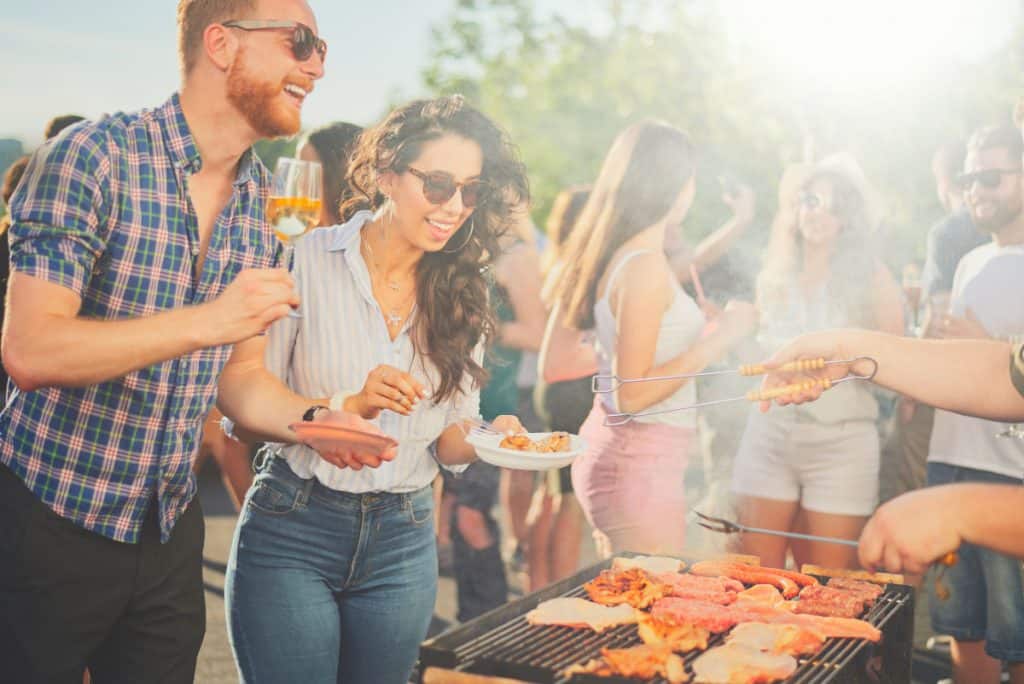
Before You Light Up
So you’ve taken the right precautions and set up your grill accordingly. Now what?
Before you start cooking, you need to prepare your grill and workstation. You should work to avoid potential accidents while also preparing yourself to act quickly should your grilling venture take a sour turn.
Get Rid of Accumulated Grease
If you’re an avid griller, you’re likely to have an accumulation of grease all around your grill.
It’s not just on the grate, but also along the cover and at the bottom. If left uncleaned, this grease will act as more fuel to the fire and cause dangerous flare-ups.
In fact, leftover grease is the main cause in a fifth of all grill fires. For specifics on how to prevent and deal with flare-ups, check out our article here.
Replace Your Grill Brushes
Grill brushes are used to get rid of grease and burned particles from the cooking grate. Typically made of stainless steel or brass, brushes are tough enough to make quick work of stubborn messes.
However, the durable bristles can lead to painful injuries. Dislodged bristles from a faulty brush are easy to miss, leading many people to ingest them.
They can get stuck in the throat or intestine to cause immense pain. To avoid this, brushes should be replaced pretty regularly. Anytime the bristles are starting to lose their shape, it’s time to switch it out with a newer model to ensure full barbecue safety.
Brushes should be made to withstand high temperatures. Cheaper options will only melt and lead to the ingestion of carcinogenic substances.
The bristles need to be thick and capable of holding their shape. The method in which the bristles and scraper are attached should be sturdy as well. Look out for metal or heavy-duty plastic that’s tightly adhered.
Wear the Right Attire
Anyone who’s going to be handling the grilling duties needs to be dressed for the task.
Because you’ll be next to the fire, you should dress for the heat. It’s best to avoid over-sized clothes or garments with long sleeves. Even dangling apron strings should be avoided as these items can quickly catch on fire as you move the food.
Keep a Fire Extinguisher Nearby
A fire extinguisher should be kept within a few steps of the grill so that’s it’s always there if a major fire occurs. While it will completely ruin your meal, it’s a much better solution than a large property fire.
With that being said, an extinguisher is no good if you don’t know how to use it! Make sure you and any other chefs fully understand how the extinguisher works and how to operate it.
Know When to Call for Help
If a fire is too big to manage on your own, call for help. Firefighters have the tools and equipment to tackle fires effectively and can usually be at your property within minutes.
Many fire deaths are attributed to the fact that people have attempted to control fires when they weren’t equipped to do so.
Have a phone on hand so that you can call 911 immediately. After doing so, clear the area and move everyone to safety so that the professionals can do their job.
Get Rid of Distractions
While grilling is typically a social event, it’s important that the person responsible for the grill isn’t distracted. All it takes is a moment for fires and accidents to occur.
Cooks should be free of distraction so that they can focus on safety and making the meal as delicious as possible.
It should go without saying that alcohol should never be in the mix. Grilling takes a clear mind. Throwing alcohol into the equation is only asking for an accident to occur.
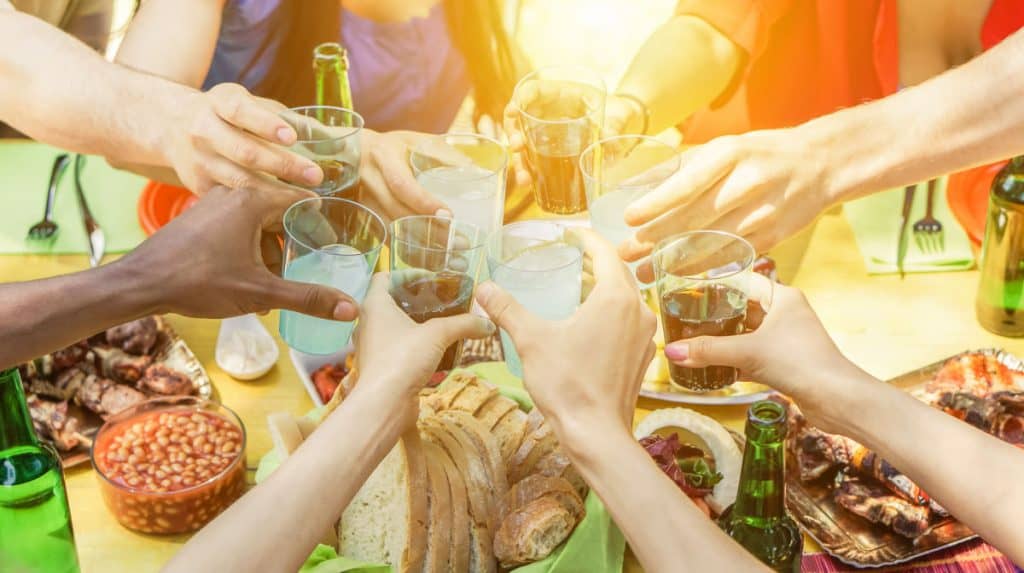
As you Grill
Finally, it’s time to get grilling! The safety work isn’t over once you put the food on the grill.
You should always keep a watchful eye and stay on your toes to avoid issues. This is especially true if you’re grilling where there’s a lot of hungry people waiting and watching.
Make Sure Someone is Always on Watch
There should always be someone there to tend to the grill.
Fires grow fast and flare-ups can occur unexpectedly. It’s always good to delegate the cooking duties to at least two people. This makes it easy to split up responsibilities and ensure that someone is always manning the grill.
One person can take care of other food preparation duties as the other keeps a watchful eye.
Leave Some Space on the Grill
It’s important to avoid overloading the grill with food for a number of reasons. For one, too much food can cause the grill to be top heavy. While this isn’t an issue with some grills, a poor design makes others very easy to tip over.
Secondly, too much food can lead to constant flare-ups. This is especially true with fatty foods. It’s fine if some fat melts and drops into the grill, but too much of it can make the fire out of control in no time.
The final reason why you shouldn’t overcrowd the grill is that you need a place to move the food if a flare-up happens. It’s important to have a spot on the grill that’s empty so that you can use it as a resting spot.
Dealing with Flare-ups
Flare-Ups are particularly dangerous and that’s why we’ve written a whole article on How to Prevent and Deal with Flare-Ups.
Food Safety
After all that preparation and grilling safety, the last thing you want to happen is for your food to be tarnished.
Whether you’re cooking prime steak or grilled vegetables, there’s a number of steps you should take to ensure that your food remains safe.
Trim the Fat
You’ve probably heard the frequently quoted expression often attributed to Julia Child, “fat gives things flavor.” This expression is couldn’t be truer, but it also makes things a bit more dangerous.
It’s a good idea to trim off any unnecessary fat from meats to keep your flare-ups to a minimum. With less fat, there’s less fuel that can be melted onto the grill.
With that being said, you don’t have to trim it all off. Fat can do wonders to the taste of your food and make the grilling process much easier. It can keep the meat moist and flavorful as it’s being subjected to all that heat.
Keep Food Protected
Bacteria grows on all food that’s above freezing temperatures and will continue to multiply and thrive until the food reaches a temperature of at least 140 degrees Fahrenheit.
Consuming this bacteria can lead to a host of potentially life-threatening health issues. Food poisoning is relatively common because people don’t keep their food protected enough.
If it’s not on the grill, it should stay in the refrigerator as long as possible. If it must stay out momentarily before you throw it on the grill, make sure it’s covered so that no pests can get into it.
This rule also applies to vegetables. Once it’s cooked, the food should have an internal temperature of at least 165 degrees.
Don’t Mix Up Your Work Surfaces and Tools
It’s important that you handle raw meat with care. Make sure to thoroughly clean and disinfect all your cooking utensils and work surfaces that the meat has touched.
A common mistake people make is using the same unwashed dish to bring the raw meat to the grill as they do to bring the cooked meat in.
If you do that, all that harmful bacteria can infiltrate your new food. Everything should be kept separate or washed for safety.
Avoid Charring Your Meat
Burning your meat can cause HCA, or Heterocyclic Amines, to form. HCA is known to cause cancer.
Consuming burnt food can put you at risk so it’s important to avoid it as much as possible. Always keep an eye on the food as it’s on the grill to stay on top of burning. You can also use marinades and smaller cuts of meat to reduce the chances of burning.
Keeping the grill under 600 degrees Fahrenheit can also help you avoid overcooking your food. It’s an important thing to look out for that can also help make sure that your food tastes great.
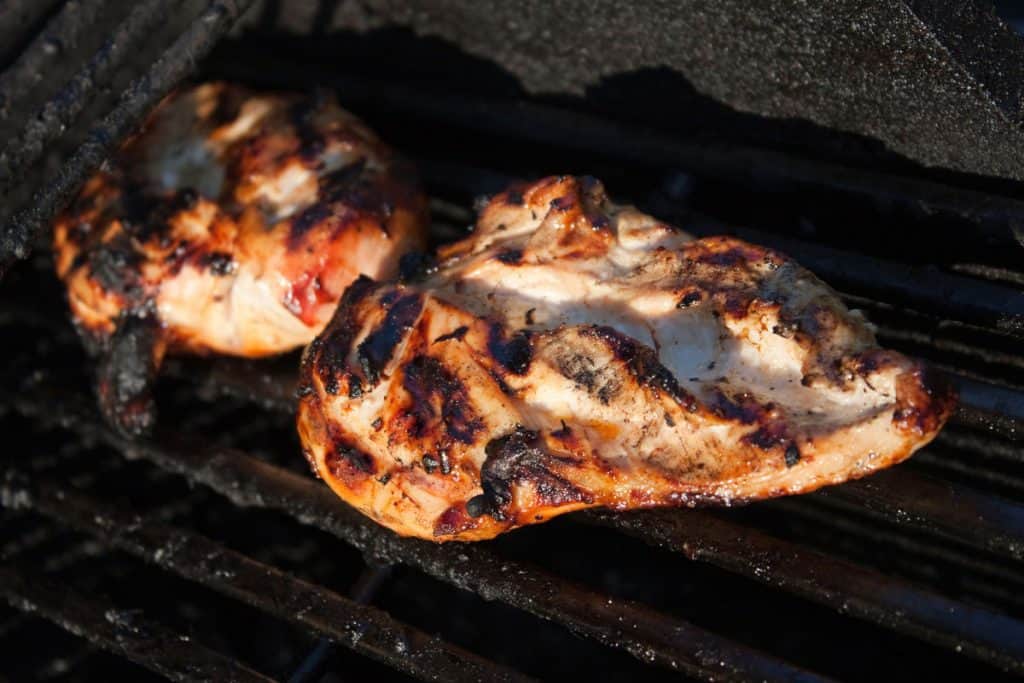
Gas Grill Safety
Gas grills have their own unique considerations.
These grills contribute to more fires than other grill types. They have the added danger of a propane tank, so it’s important to understand how to operate the grill, maintain the various components, and prepare yourself for accidents.
Check for Leaks
Give your grill a good once-over to spot any potential issues with your gas line and tank. Look out for any holes or bugs that may alter the way the grill functions.
You can also use a soap and water solution.
Spray the solution on the entire length of the hose and turn on the gas. If there’s a leak, bubbles will start to form.You should then turn off the gas and check the connections.
You should never attempt to grill with a leak. Should the leak continue even after you’ve turned off the gas, it’s important to call the fire department.
Leaks are incredibly dangerous and can cause explosions with even the smallest source of ignition.
Keep the Cylinder Upright and Safe
The propane gas tank cylinder needs to be kept safe at all times. It should never be placed indoors or on its side. Tanks should be kept upright to prevent leaks.
When not in use, both the tank and hose should be outfitted with a protective cap. This cap will prevent accidental leaks and ignitions.
The tank should also be examined periodically for dents or leaks. If you’re traveling with a filled tank, you should never leave it in the car. Instead, drive straight home so that it can be stored safely.
Tank Refills & Exchanges
When your tank runs dry, your most affordable option is to get it refilled. There are a number of places that offer refilling services. However, they do have safety guidelines to follow.
Policies vary depending on the refilling station. Many limit the weight of the refill while others prevent you from using your tank once it’s past the expiration date.
However, there are places you can take the tank to get it re-certified so that you can continue to use it if it’s in good condition.
Exchanging your tank is a more convenient option compared to refilling. You can simply swap your existing tank for a filled tank. Tanks are tested and inspected, so you can rest assured it’s in good condition.
With that being said, it’s important to do a manual inspection before accepting it. You should never accept a tank that’s rusted, corroded, or showing signs of excessive damage.
Also, go with a relatively newer tank. Most exchange companies put an expiration date on their tanks and won’t accept it if it’s gone past that.
It’s also good to go with a tank that has a low tare weight. This refers to the weight of the tank itself. Refilled tanks are filled to a specific weight. If you go with a heavier tank, you’re actually getting less gas.
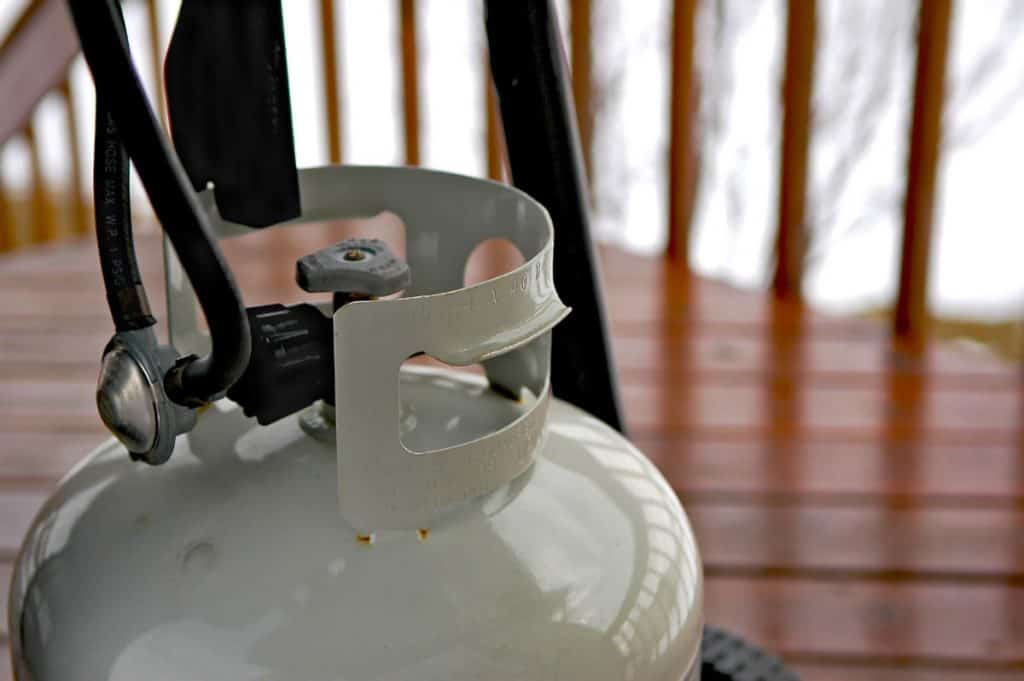
There are a few things to be cautious of when using a gas grill. While the tank may be in good condition without any leaks, problems can occur as you start cooking. Keep these gas grill safety tips in mind when you’re about to light up.
Light the Grill with the Lid Up
To properly light the grill, turn on the gas and immediately ignite it with the lid up.
Leaving the lid down and waiting a few moments to light up will cause the gas inside to accumulate. This cloud of gas will get bigger and bigger the longer you wait.
When you do finally ignite it, the gas will explode. It’s important to keep the lid up and ignite the gas immediately.
Don’t Rush the Ignition Process
The gas should ignite within 10 seconds. If it doesn’t, it’s recommended that you shut off the gas and step away for at least five minutes before you make another attempt.
This is to prevent the buildup of gas. Should you keep trying after 10 seconds, you run the risk of creating an explosion.
Turn Off the Gas if You Detect a Leak
Leaks can still occur once you’ve started cooking. Once the gas is lit, you shouldn’t be able to smell the propane. If you do, you should turn off the gas and burners immediately.
Remove the food and get the grill serviced before you use it again. If you still smell the gas after it’s turned off, it’s time to call the fire department for help.
Let the Grill Cool Down Completely When You’re Done
One of the biggest perks of gas grilling is speed. It’s quick to light up and relatively quick to cool down. After you’ve removed your food, you should let it cool off completely before you close the lid.
Make sure that the burners are off and the tank valve is completely closed. Wait about an hour or so for it to cool down before you close the lid and cover the grill.
Charcoal Grill Safety
Lighting the Coals
Injuries caused by charcoal grills are mainly due to the process of lighting the coals. Lighter fluid in particular poses a number of risks. That’s why we recommend you avoid using lighter fluid and use a charcoal chimney instead.
The chimney is safer and you get the added perk of not having a chemical taste to your meat. To do this, check out our guide on the best way to light a charcoal grill.
If you do decide to use lighter fluid, make sure you use these safety tips.
Keep Lighter Fluid Safe and Capped
Lighter fluid can evaporate, build up, and sink down, causing it to explode upon ignition.
To avoid this, the bottle should be closed and secure at all times. Furthermore, keep that bottle far away from the grill once it’s lit. Store it in a cool place away from the grill for safety.
Form a Pyramid and Let the Fluid Soak
If you’re going with the traditional method of lighting a fire, your best bet is to form a pyramid out of the coal briquettes.
The pyramid should be in the center of the grill, as they will be spread out once they’re hot. Then, pour the starter fluid over the coals and let them soak in completely before you attempt to light it.
You should then light a piece of newspaper on fire and toss it on top of the coals at a safe distance.
As noted above,chimneys are a much safer alternative than creating a pyramid. The large metal cylinder is placed in the center of the grill and filled with briquettes.
Instead of dousing the coals with starter fluid, simply light a piece of newspaper and slip it underneath the chimney. Many have specific compartments to hold the paper. The flames will rise and light the coals safely.
When they’re sufficiently heated, they can be dumped out of the chimney and arranged in the grill.
Never Apply Lighter Fluid to Hot Coals
If your heat is starting to die down, the worst thing you can do is add some more fluid.
Adding fluid to hot coals can cause a large fire to ignite. This fire can then travel up the stream of the bottle and light it on fire. Before you know it, you’ll be covered in lit fuel. Instead, fan the coals to build up the heat.
The video below shows why you don’t add lighter fluid to hot coals.
Electric Starters
Electric starters don’t require any fuel or even a lighted newspaper. They consist of a single metal heating element that goes between two layers of coals.
Make sure to place the extension cord where no one can trip on it and in an area that’s completely dry.
Once the coals are heated, you can unplug the starter.
You should then store it on a surface that’s non-combustible, such as a hotplate or concrete. Let it cool down completely before you store it away.
Cleaning Up
Unlike their gas counterpart, charcoal grills require a bit of extra time and maintenance after you’re done.
These extra charcoal grill safety steps will ensure that the grill is secure for storage and ready for the next cookout.
Let the Coals Cool for 48 Hours
After you’ve removed your food from the grill, you should let the coals burn out on their own.
Of course, you should keep a watchful eye on the grill as it does so. The lid should be applied after you’re done cooking. Doing so will control the smoke and prevent oxygen from heating the coals back up.
Let the ashes cool for at least 48 hours before you remove them.
Disposing of Ashes
If the ashes still seem a bit warm, you can spray them thoroughly with water. After doing that, wrap the ashes up in aluminum foil.
While they’re completely cool, you don’t want to run the risk of accidental ignition. Don’t put them in plastic or paper. Keep it in the aluminum and place it in a non-combustible container that’s away from anything that could light the ashes up again for added security.
Electric Grill Safety
Electric grills are a safer alternative than charcoal or gas. They can be used indoors and act like any other electric appliance you may have.
While they don’t have the same risks of fire and explosion as other grills, they do run the risk of electrocution.
Ensure That the Plug is Grounded
Electric grills need to be properly protected to prevent shocks and shortages.
They should be attached to a ground terminal and a ground fault interrupter for added safety. These grills use high voltages to heat up the element inside. Without proper ground and GFI protection, you can get electrocuted.
Keep the Cord Safe
While electric grills aren’t known for having lengthy cords, it’s important to keep it safe from the heat of the plate and water.
The same applies for any extension cords you may be using. The cords need to be out of the way to prevent tripping.
Furthermore, you need to make sure that the control knobs are in the “OFF” position prior to plugging or unplugging the grill. Failure to do so can result in a jolting surprise.
Place the Grill in a Safe and Stable Spot
Electric grills have a number of components to keep your eye on. Not only does the cord need to be free of potential dangers, but so does the heating element.
The grill should be positioned on a stable surface free of moisture of combustible materials. Make sure the surface is clean, dry, and heat resistant.
Perform a Through Inspection
Before each use, it’s recommended that you examine every component of the grill.
Look out for burn marks or other signs of damage. If something looks out of place, it’s best to get the grilled serviced rather than risking electrocution.
Conclusion
While grilling does come with its risks, all it takes is a bit of extra preparation and awareness to avoid injury or disaster.
Barbecue safety is important and shouldn’t be taken likely. With these barbecue and grilling safety tips, you should be able to stay safe while you have fun during your next cookout.

